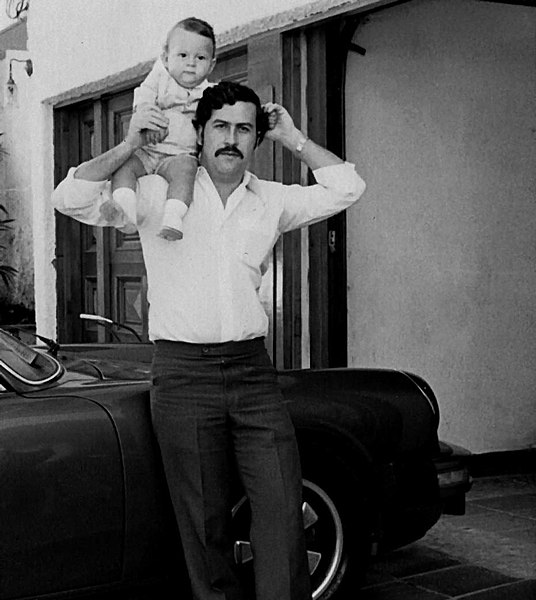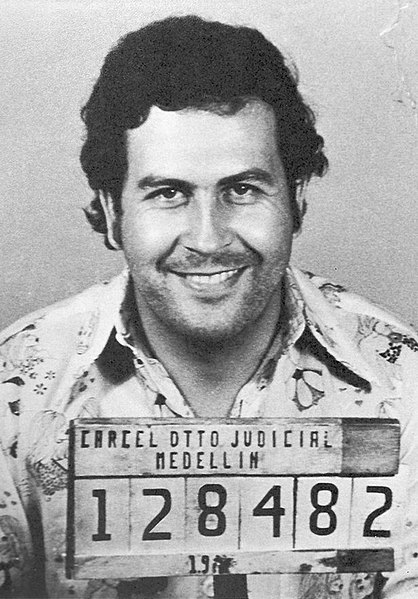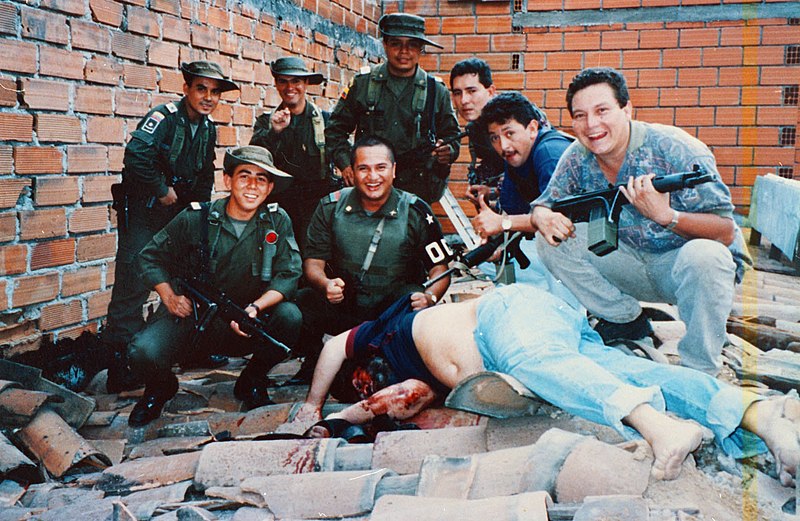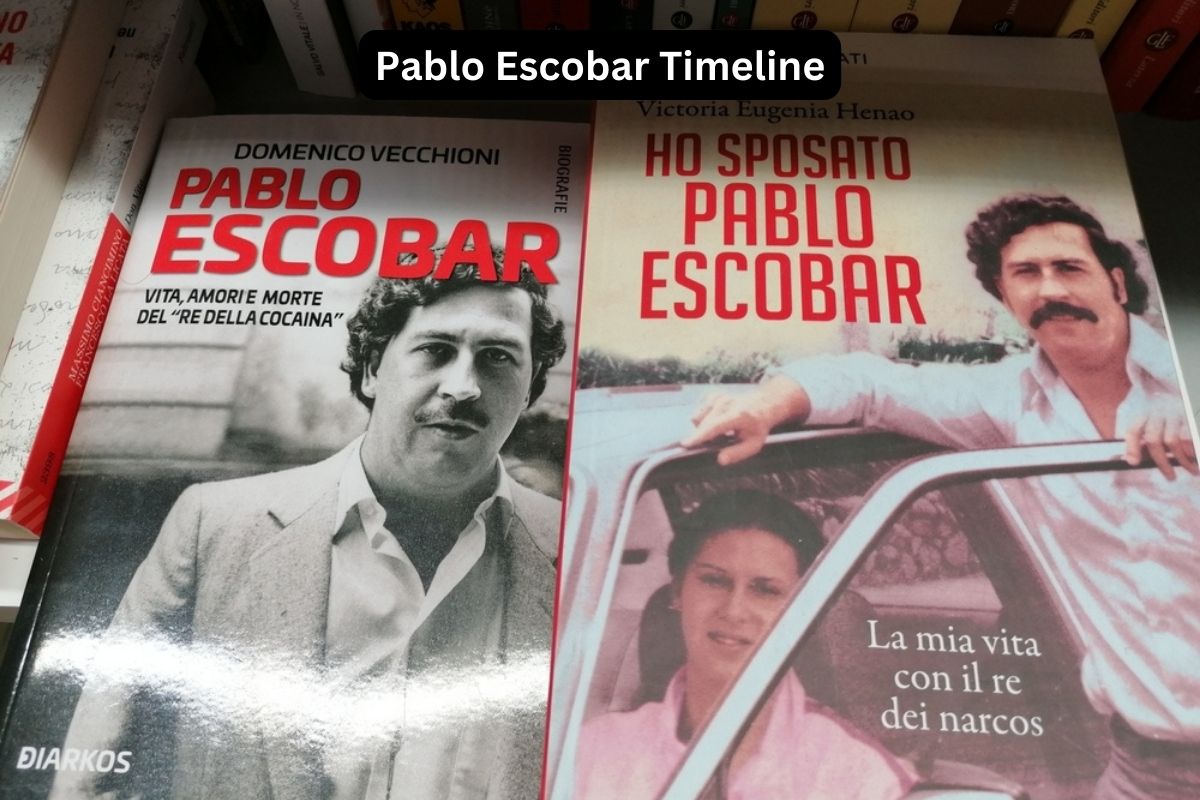Pablo Escobar, often dubbed the “King of Cocaine,” remains one of the most infamous and enigmatic figures in the annals of criminal history.
Born into modest beginnings in Colombia, Escobar ascended to unprecedented heights of power and wealth through his involvement in the illicit drug trade.
This article delves into the life and legacy of Pablo Escobar, tracing his meteoric rise as the head of the notorious Medellín Cartel, his cat-and-mouse game with law enforcement, and ultimately, his dramatic downfall.
From his humble origins to his eventual demise in a hail of gunfire, Escobar’s story is a gripping tale of ambition, ruthlessness, and the indelible mark he left on the world of organized crime.
| Date | Event |
|---|---|
| December 1, 1949 | Pablo Emilio Escobar Gaviria is born in Rionegro, Colombia. |
| 1975 | Escobar begins his criminal career by smuggling contraband such as cigarettes and fake lottery tickets. |
| 1976 | He establishes the Medellín Cartel with other criminals, becoming involved in cocaine trafficking. |
| 1980s | The Medellín Cartel becomes one of the most powerful drug trafficking organizations in the world, responsible for the majority of cocaine entering the United States. |
| August 18, 1989 | Escobar surrenders to Colombian authorities under a deal known as “surrender and immunity.” However, he continues criminal activities from his luxurious prison, La Catedral. |
| July 22, 1992 | After the Colombian government attempts to move him to a less luxurious prison, Escobar escapes from La Catedral. |
| December 2, 1993 | Colombian security forces, with assistance from U.S. authorities, locate Escobar in a safehouse in Medellín. He is killed during a shootout with police, ending his reign as the head of the Medellín Cartel. |
Timeline of Pablo Escobar
December 1, 1949: Pablo Emilio Escobar Gaviria is born in Rionegro, Colombia
Pablo Escobar was born into a lower-middle-class family in the town of Rionegro, located in the Antioquia department of Colombia.
Also Read: Facts About Pablo Escobar
His father, Abel de Jesús Dari Escobar, was a farmer, while his mother, Hermilda Gaviria, was a schoolteacher. Pablo grew up in modest circumstances but showed early signs of ambition and intelligence.

1975: Escobar begins his criminal career by smuggling contraband such as cigarettes and fake lottery tickets
In the mid-1970s, Escobar started his criminal activities by smuggling contraband goods such as cigarettes and counterfeit lottery tickets.
These initial ventures laid the foundation for his later involvement in more lucrative and illegal enterprises. This period marked the beginning of Escobar’s rise in the underworld of Colombian organized crime.
1976: He establishes the Medellín Cartel with other criminals, becoming involved in cocaine trafficking
Escobar quickly moved into the cocaine trade, recognizing its enormous profit potential. Alongside other criminals including Carlos Lehder, Jorge Luis Ochoa, and his cousin Gustavo Gaviria, Escobar founded the Medellín Cartel.
Also Read: War on Drugs Facts
The cartel gained control over every stage of the cocaine production process, from coca cultivation to transportation and distribution. Under Escobar’s leadership, the cartel became notorious for its ruthlessness, violence, and ability to evade law enforcement.
This marked the beginning of Escobar’s transformation into one of the most powerful and feared drug lords in history.
1980s: The Medellín Cartel becomes one of the most powerful drug trafficking organizations in the world
Throughout the 1980s, the Medellín Cartel, under Pablo Escobar’s leadership, grew into a global criminal empire. The cartel’s operations expanded rapidly, with cocaine production increasing to meet the soaring demand in the United States and other international markets.
Escobar’s strategic alliances with other drug traffickers, corruption of government officials, and ruthless tactics ensured the cartel’s dominance in the illicit drug trade. At its peak, the Medellín Cartel was estimated to be responsible for supplying up to 80% of the cocaine smuggled into the United States.

August 18, 1989: Escobar surrenders to Colombian authorities under a deal known as “surrender and immunity”
Facing mounting pressure from law enforcement and increased scrutiny, Pablo Escobar negotiated a deal with the Colombian government in August 1989.
Under the terms of the agreement, known as “surrender and immunity,” Escobar surrendered to authorities, effectively admitting guilt to drug trafficking charges.
In return, he was allowed to build his own luxurious prison, known as La Catedral, where he could continue to run his criminal operations with relative freedom. La Catedral became a symbol of Escobar’s brazen defiance of the law and his ability to manipulate the Colombian justice system to his advantage.
July 22, 1992: After the Colombian government attempts to move him to a less luxurious prison, Escobar escapes from La Catedral
Escobar’s time at La Catedral came to an abrupt end when the Colombian government, under mounting pressure from the United States, attempted to transfer him to a more conventional prison with tighter security measures.
Fearing extradition to the United States and a loss of control over his criminal empire, Escobar orchestrated a daring escape from La Catedral on July 22, 1992.
This escape marked a significant embarrassment for the Colombian government and intensified the manhunt for Escobar, who went into hiding to evade capture.
December 2, 1993: He is killed during a shootout with police, ending his reign as the head of the Medellín Cartel

After more than a year of intense manhunt, Colombian security forces, with intelligence assistance from the United States, finally closed in on Pablo Escobar’s whereabouts in a safehouse located in a residential neighborhood in Medellín.
On December 2, 1993, a team of Colombian National Police, known as the Search Bloc, raided the safehouse where Escobar was hiding.
Escobar attempted to flee across the rooftops of neighboring houses but was ultimately cornered. A shootout ensued between Escobar and the police.
During the exchange of gunfire, Escobar suffered multiple gunshot wounds and was eventually shot in the head, resulting in his death. His demise marked the end of his reign as the head of the Medellín Cartel and brought an end to one of the most notorious criminal careers in history.
The death of Pablo Escobar was celebrated by many Colombians and viewed as a significant victory for law enforcement in their fight against organized crime. However, it also left a power vacuum in the Colombian drug trade, leading to further violence and instability as rival factions vied for control over Escobar’s former territories and drug routes.
